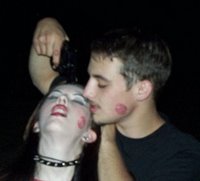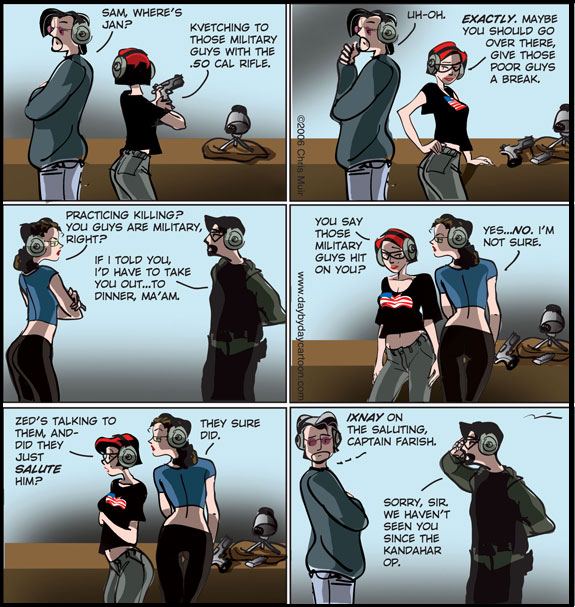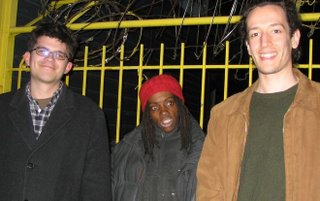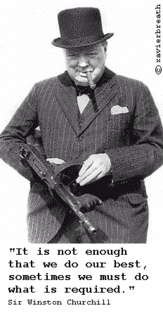H&R 923 Range Report
 I have often seen these inexpensive wheelguns on pawn shop shelves, and have been intrigued, but not enough to pay the $50-100 price they usually sell for. When one came my way as a gift, I could not turn it down. The nickel H&R 923 is a .22LR caliber nine shot revolver. It has a serrated trigger that delivers a double action pull greater than eight pounds. There is some stacking at the end of the pull as well. The grips are swirly brown plastic, and the hammer is operated via a coil spring. The little H&R has a hammer mounted firing pin, and a safety to prevent a blow to the hammer from discharging the weapon. The gun has fixed sights, and they aren't bad.
I have often seen these inexpensive wheelguns on pawn shop shelves, and have been intrigued, but not enough to pay the $50-100 price they usually sell for. When one came my way as a gift, I could not turn it down. The nickel H&R 923 is a .22LR caliber nine shot revolver. It has a serrated trigger that delivers a double action pull greater than eight pounds. There is some stacking at the end of the pull as well. The grips are swirly brown plastic, and the hammer is operated via a coil spring. The little H&R has a hammer mounted firing pin, and a safety to prevent a blow to the hammer from discharging the weapon. The gun has fixed sights, and they aren't bad.To load the little H&R,
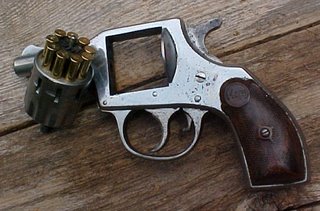 one must pull out the cylinder rod, allowing the recessed cylinder to drop out one side. The cylinder can then be loaded and reinstalled. The cylinder rod can also be use to expel the spent brass with the ejector star after shooting. The forcing cone of the barrel is totally within the frame. The cylinder gap is .010. The barrel is two and a half inches long. Once loaded, the little H&R would carry nicely in a home made pocket holster. There is no need to be pretentious with this gun, Hell, make a pocket holster out of cardboard and duct tape! Who cares as long as it works?
one must pull out the cylinder rod, allowing the recessed cylinder to drop out one side. The cylinder can then be loaded and reinstalled. The cylinder rod can also be use to expel the spent brass with the ejector star after shooting. The forcing cone of the barrel is totally within the frame. The cylinder gap is .010. The barrel is two and a half inches long. Once loaded, the little H&R would carry nicely in a home made pocket holster. There is no need to be pretentious with this gun, Hell, make a pocket holster out of cardboard and duct tape! Who cares as long as it works? I took the little shooter to the range with a bulk pack of Federal ammo and my K-22 as a standard of comparison.
 Now, I know the H&R will not whoop a K-22, but the K-22 will definitely show how well I can shoot on a specified day at a specified distance. Considering that the H&R is not a target gun, but a cheap defensive weapon of last resort, I ran index cards out to ten feet. I shot both revolvers double action. I used a flash sight picture with both revolvers. The K-22 had an apparent advantage due to it's longer sight radius. This advantage was neutralized by the flash sight picture shooting however. The longer sight radius took more time to attain a sight picture. The shorter radiused H&R was quicker to the sights. As expected though, the K-22 out shot the H&R, but again, the only purpose of the K-22 was to determine the extent of my own abilities, and the limitations of the cheaper gun.
Now, I know the H&R will not whoop a K-22, but the K-22 will definitely show how well I can shoot on a specified day at a specified distance. Considering that the H&R is not a target gun, but a cheap defensive weapon of last resort, I ran index cards out to ten feet. I shot both revolvers double action. I used a flash sight picture with both revolvers. The K-22 had an apparent advantage due to it's longer sight radius. This advantage was neutralized by the flash sight picture shooting however. The longer sight radius took more time to attain a sight picture. The shorter radiused H&R was quicker to the sights. As expected though, the K-22 out shot the H&R, but again, the only purpose of the K-22 was to determine the extent of my own abilities, and the limitations of the cheaper gun.I hesitate to say what I was expecting, for fear of appearing to be a gun snob.
 Suffice to say, I was hoping to just return home with all my fingers and blood volume and perhaps get nine shots on my index card. The H&R could reliably do that at defensive distances. After five cylinders of ammo, and as the barrel began to heat up, this became more difficult, but it was easily attainable with a cold clean barrel. The H&R stayed on the paper. I was half expecting the H&R to cut me as I shot it. It did not. It never failed to fire, even when dirty. It did not spit lead due to poor timing. I was expecting an unpleasant gun to shoot. The H&R is not exactly ergonomic, but it shoots easier than a KelTec P-32 or a Walther PPK. Of course, a lot of that has to do with the caliber.
Suffice to say, I was hoping to just return home with all my fingers and blood volume and perhaps get nine shots on my index card. The H&R could reliably do that at defensive distances. After five cylinders of ammo, and as the barrel began to heat up, this became more difficult, but it was easily attainable with a cold clean barrel. The H&R stayed on the paper. I was half expecting the H&R to cut me as I shot it. It did not. It never failed to fire, even when dirty. It did not spit lead due to poor timing. I was expecting an unpleasant gun to shoot. The H&R is not exactly ergonomic, but it shoots easier than a KelTec P-32 or a Walther PPK. Of course, a lot of that has to do with the caliber. And finally, caliber is what it boils down to here. Does a person trust .22LR for self defense? I put 216 rounds downrange with this little pistol today. The H&R 923 never failed to fire. It kept all the shots in a 5X9 area, even when hot. It had no damage after doing so, and only required a general cleaning. It's not pretty, but it works. Unlike a semi-automatic, a revolver is what cajuns call a "guaronteed gonna shoot" gun. This gun costs around $100 new, around $50 used. A person could carry two for under $100, perform New York reloads and have 18 rounds of ammo on tap. That's something to think about. The question is, do you trust the stopping power of .22 Long Rifle, and how much accuracy do you need? These are difficult questions to answer. For some people though, the little H&R might give that answer.
Labels: 22 Caliber Handguns, Range Reports




